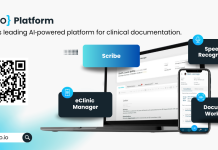Explore the implementation of Digital Pathology in Histology throughout the NHS in the UK and the current state of digital usage, including challenges, implementation and opportunities for innovation
Histology is on the brink of rapid evolution and digitisation, with widespread adoption common across the UK. However, many NHS Pathology laboratories still face challenges in transitioning to a complete digital delivery of their service.
Supporting the digital Histopathology journey
At FUJIFILM Healthcare Europe, we have proudly supported over 20 NHS sites and networks across the UK on their digital Histopathology journey. This experience has provided valuable insight into the potential challenges and their avoidance, enabling the development of a solution that delivers direct benefits to patients through efficient digital workflows, which aid diagnosis and ease the burden on a resource-strained workforce.
A greater number of Pathologists are retiring from the profession than those joining. (1) The Royal College of Pathologists report on workforce staffing of Histopathology departments in the UK highlighted only 3% of respondents had enough staff to meet clinical needs. (1) Further research by Cancer Research UK forecasted a 5% increase in Histology slides per annum, with a 47% workforce increase required to meet the predicted Histology workload in 2029. (2) This was the highest requirement of the seven cancer- supporting professions investigated.
Successfully implemented digital solutions aid the resource-constrained Pathologists and laboratory team with specific features to streamline efforts required for Multi-Disciplinary Meetings (MDT), for example.
NHS targets and expectations for Histopathology departments are ever-growing, further forced by the recent NHSE targets introduced in March 2025, which require 98% of all Histology reports to be made available within 10 days. (3)
The benefit of adopting of Digital Histology
The adoption of Digital Histology reporting offers a considerable benefit; however, despite the number of trusts that have implemented a Digital Pathology solution, only 31% of primary diagnoses are reported via their Image Management System (IMS) in the UK (4), with rates estimated to be lower in Europe and Asia at 23% (5) and lower still to just 10% in the U.S. (6) A potential contributing factor for this, aligned to workforce shortages, is the volume of work outsourced from the departments.
Of the 103 Histopathology departments that participated in a research survey, nearly 50% outsource work to cope with demand. (7) Physical outsourcing of slides for reporting is a daily practice for many NHS trusts, actioned via the time-consuming manual task of slide collation and packaging, with the added risk of damage or loss during transportation.
Digitalisation offers the opportunity to streamline outsourcing workflows, removing manual interaction. The automatic transfer of digital slides can result in departments experiencing cost and time-saving benefits.
FUJIFILM Healthcare Europe partners with several backlog reporting providers that specialise in digitalised outsourcing workflow. These combined solutions, operated by companies, have resulted in a drastic reduction in reporting turnaround times from over 14 days for physical slide movement to an average of two to three days with the digital ecosystem. (8)
Digital transformation of Histology services may face challenges, namely the implementation and ongoing storage costs, the change management requirements for the additional laboratory process and verification/ validation activities for Pathologist transition.
The technical requirements for storage and infrastructure strategies must consider the specifics related to Digital Pathology, which differ significantly from the Radiology transition, namely the large image file size and the absence of a standardised file type.
While infrastructure and storage costs may be a concern, utilising cloud-based infrastructure (as recommended in the NHS mandate) can alleviate these pressures. The benefits of cloud-based storage include the flexibility and scalability of storage requirements, while providing a seamless and secure user experience. Real-world data from one of FUJIFILM’s customer sites highlights the volume of data produced, with over 500,000 slides per annum generating 800TB of data. This site takes benefit of cloud-based storage, ensuring they can scale their storage requirements as and when required in comparison to an on-site solution.
FUJIFILM Healthcare’s solution SYNAPSE® Pathology
Despite these initially perceived challenges, why have so many sites across the UK and beyond made the transition to Digital Pathology? One of the primary benefits is the increased speed of diagnosis. Utilising FUJIFILM Healthcare’s solution SYNAPSE® Pathology, our software is proven to deliver digital images for diagnosis 1.7 hours faster than glass slides (9), while fostering collaboration and communication with cross-sharing
of cases. Opportunities for home working also appease the Pathologist community, and with remote access capabilities, the scope for overseas Pathologists becomes a viable option.
The benefits of AI in Histology are only achievable with the foundation of a fully integrated IMS. The AI revolution is unattainable via the analogue Histology reporting process.
Results from a 2021 study demonstrate that productivity can be boosted by up to 37% when using Digital Pathology solutions in conjunction with AI. (10) In cases of prostate cancer, AI reduces the turnaround time of reporting from
1.8 days to 9.4 minutes compared to the analogue microscope method. (9) AI has also demonstrated high accuracy in identifying Pathology across various tissue types. (10,11)
In summary, the evidence clearly indicates a pressing opportunity for Histology services to evolve and benefit from the adoption of digital transformation. The implementation of solutions such as SYNAPSE® Pathology software have been proven to deliver quality, accuracy and productivity improvements, as referenced in this article. The improvements provide direct benefits to the patient, streamlining resource requirements, which in turn result in a reduction in time and cost, both of which counteract the elements of implementation.
Choosing solutions and infrastructures that can future-proof your Digital Pathology investments is vital. Communicating the value of new solutions is equally important to support your laboratory teams in their digital adoption and transition journey.
With our global experience supporting over 7,000 SYNAPSE® customer installations, including more than 350 active users of the SYNAPSE® Pathology software in the UK, at FUJIFILM Healthcare Europe, we are proud to be by your side as the leading global Digital Pathology software provider (13), supporting you in your digitalisation journey.
References
- Royal College of Pathologists. “The Pathology Workforce.” https://www.rcpath.org/discover-pathology/public-affairs/the-pathology-workforce.html
- Cancer Research UK. “Estimating the cost of growing the NHS cancer workforce in England by 2029). October 2020.
- Biomedical Scientist “Transforming Histopathology” Jan 2024 https://thebiomedicalscientist.net/2023/10/02/transforming-histopathology#:~:text=Within%20this%20plan%20are%20the,10%20days%20by%20March%202025.
- Profile 2
- Williams BJ, Lee J, Oien KA, et al Digital pathology access and usage in the UK: results from a national survey on behalf of the National Cancer Research Institute’s CM-Path initiative. Journal of Clinical Pathology 2018;71:463-466.
- Lloyd M. Going digital, turning green. The Pathologist. 25 September 2024.
- Pinto DG, Bychkov A, Tsuyama N, Fukuoka J and Eloy C. Real-world implementation of digital pathology: results from an intercontinental survey. Laboratory Investigation. December 2023; 103(12).
- Royal College of Pathologists. “Meeting Pathology Demand Histopathology Workforce Census” 2018.
- Source LDPath, “Digital Pathology” https://sourcebioscience.com/histopathology/digital-pathology/digital-pathology-2/
- Lujan G, Kellough DA, Frankel WL, Chhibber NN, Parwani AV, Chen W, Li Z, Lombardo A, Walsh J, Lloyd M. Faster Than Glass: A Digital Pathology Workflow Unlocks Major Time-Savings. United States & Canadian Academy of Pathology’s (USCAP) 111th Annual Meeting. Los Angeles, CA. March 19-24, 2022.
- Information provided by Ibex AI. Raoux et al. Modern Pathology (2021) 34 (suppl 2): 598-599.
- Information provided by Ibex AI. Sandbank et al., npj Breast Cancer, December 2022.
- Information provided by Ibex AI. Sandbank et al., Modern Pathology 2022, 35,513-514.
- Fitt, Imogen. “Digital Pathology – World 2024.” Signify Research, 13 Sept. 2024, https://www.signifyresearch.net/market-intelligence/digital-pathology-world-2024/

This work is licensed under Creative Commons Attribution-NonCommercial-NoDerivatives 4.0 International.











